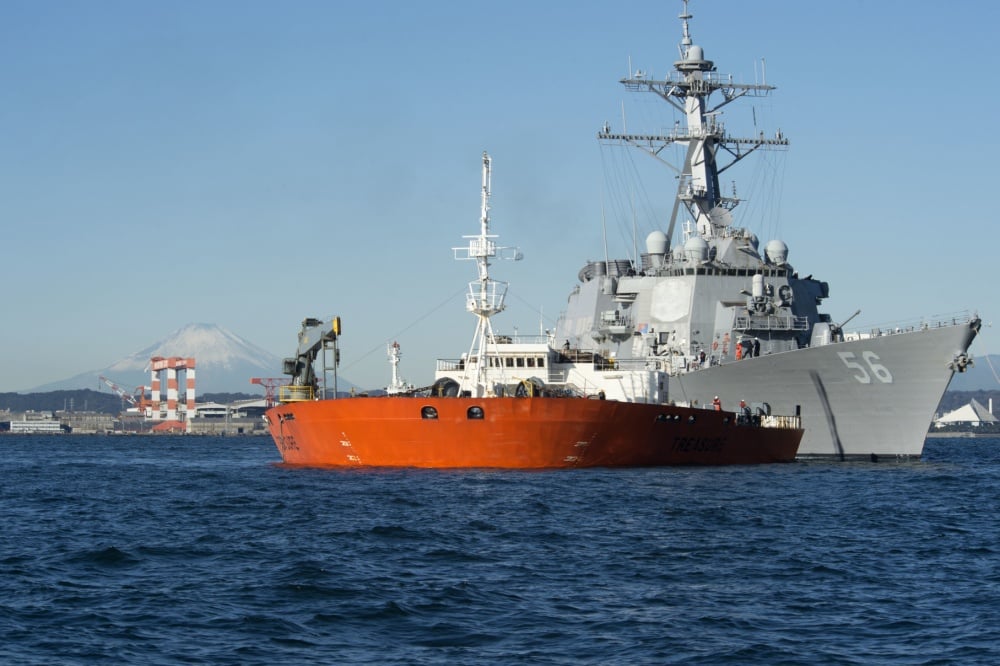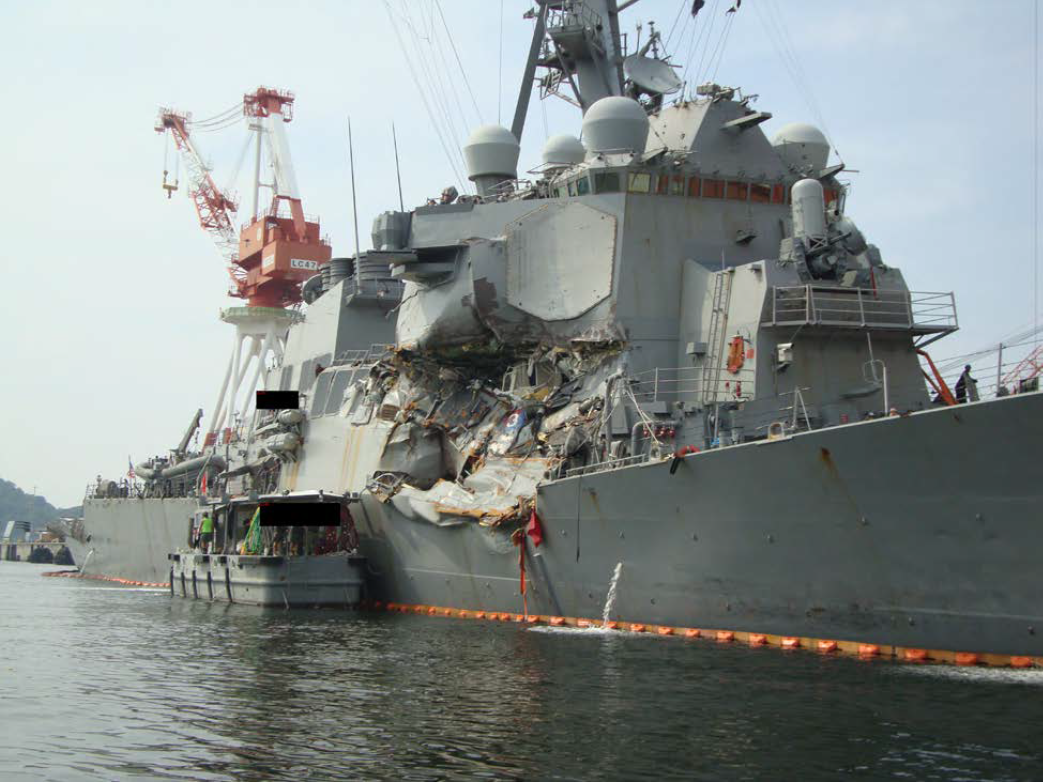
The Navy is poorly positioned to fully repair its fighting fleet of warships damaged in future high-end battles, the Government Accountability Office found in a report released this week.
The GAO found that the Navy would struggle if conflict erupted and several ships sustained sufficient battle damage that ships’ crews couldn’t repair. “
Navy officials we interviewed generally agreed that the Navy could handle a single battle damage event, but were uncertain how the Navy might handle multiple simultaneous or near-simultaneous events,” the report stated.
“The Navy has identified several challenges with using its regular maintenance capability (which restores ships to fully operational status) to provide battle damage repairs during a great power conflict. Challenges include the lack of established doctrine for battle damage repair, unclear command and control roles, and a shortage of repair capacity,” according to a GAO assessment released Wednesday in a study mandated as part of the 2020 National Defense Authorization Act.
Moreover, while the issues raised aren’t new, the GAO determined the service hasn’t fully addressed those concerns, in part because no single person or entity has been put in charge of doing so.
“The Navy is in the early stages of determining how it will provide battle damage repair during a great power conflict. Eight organizations are responsible for the Navy’s 15 battle damage repair planning efforts, however the Navy has not designated an organization to lead and oversee these efforts,” the GAO report reads.
“Without designated leadership, the Navy may be hindered in its efforts to address the many challenges it faces in sustaining its ships during a great power conflict.”
“The Navy develops ship vulnerability models during a ship’s acquisition to estimate damage during a conflict. These models are also used to inform war games that refine operational approaches and train leaders on decision-making. However, the Navy does not update these models over a ship’s decades-long service life to reflect changes to key systems that could affect model accuracy.”
“As a result, it lacks quality data on ship mission-critical failure points to inform its analysis of battle damage repair needs,” the report stated. “Without periodically assessing and updating its models to accurately reflect the ship’s mission-critical systems, the Navy has limited its ability to assess and develop battle damage repair capabilities necessary to sustain ships in a conflict with a great power competitor.”

The GAO issued three recommendations for the Navy secretary to “designate an organization with the appropriate authority to lead and oversee development of the Navy’s battle damage repair capability,” “designate an organization to develop and issue guidance that clarifies command and control responsibilities for executing battle damage repair” and to “establish guidance that requires the Navy to periodically assess and update, as appropriate, ship vulnerability models to ensure these models accurately reflect the ship’s mission-critical systems and inform battle damage repair planning efforts.”
The Navy generally agreed with the GAO’s findings and “partially concurred” with the three recommendations. It responded that Naval Sea Systems Command, “in coordination with other stakeholders across the Navy enterprise, is the organization with the authority to lead and oversee development of the Navy’s battle damage repair capability and is recognized as such.”
The report notes that inaction has created a significant risk the fleet hasn’t faced since World War II.
“The Navy has not needed to triage and repair multiple battle-damaged ships in quick succession since World War II,” the GAO report noted in an accompanying letter to Congress. “After the end of the Cold War, the Navy divested many of its wartime ship repair capabilities, and its ship maintenance capabilities have evolved to focus largely on supporting peacetime maintenance needs. However, the rise of 21st century adversaries capable of producing high-end threats in warfare—referred to as great power competitors—revives the need for the Navy to reexamine its battle damage repair capability to ensure it is ready for potential conflict.”
It’s of particular concern, the agency noted, because of growing concerns of continued delays and backlog in regular ship maintenance and unplanned repairs and in the ability of shipyards and the industrial base to support requirements. “In light of ongoing shipyard challenges to keep up with regular maintenance demand, battle damage repairs may further exacerbate these challenges,” the report stated.

And future operations, as the Navy envisions, will add additional stress, as the dispersal of ships across the distributed maritime operations will stretch logistical support and demands, the GAO found. “The U.S. Navy will likely suffer increased damage in a contested maritime environment that will drive demand for expeditionary maintenance and salvage capabilities—meaning away from established shipyards and closer to the conflict,” the report stated.
The GAO noted the Navy’s own acknowledgment of shortfalls in its current capabilities to do battle damage repair, “perennial issues” that remain unresolved. These “challenges” include: Lack of established doctrine for battle damage repair, lack of clear roles and responsibilities, reliance on maintenance contractors, lack of logistics-focused war games, reliance on contracted salvage support ships, parts needed for battle damage repair, unclear command and control responsibilities, reliance on civilian maintenance experts, regular maintenance capability is already operating at or above capacity, and unknown or unreliable availability of foreign ports.
The agency also noted the Navy’s ongoing work to address battle damage repair planning, a set of 15 separate efforts, most which began just three years ago.
The service has had recent experience with handling damage to ships. In 2017, destroyers USS Fitzgerald (DDG-62) and USS John McCain (DDG-56) took years and several hundred million dollars .





